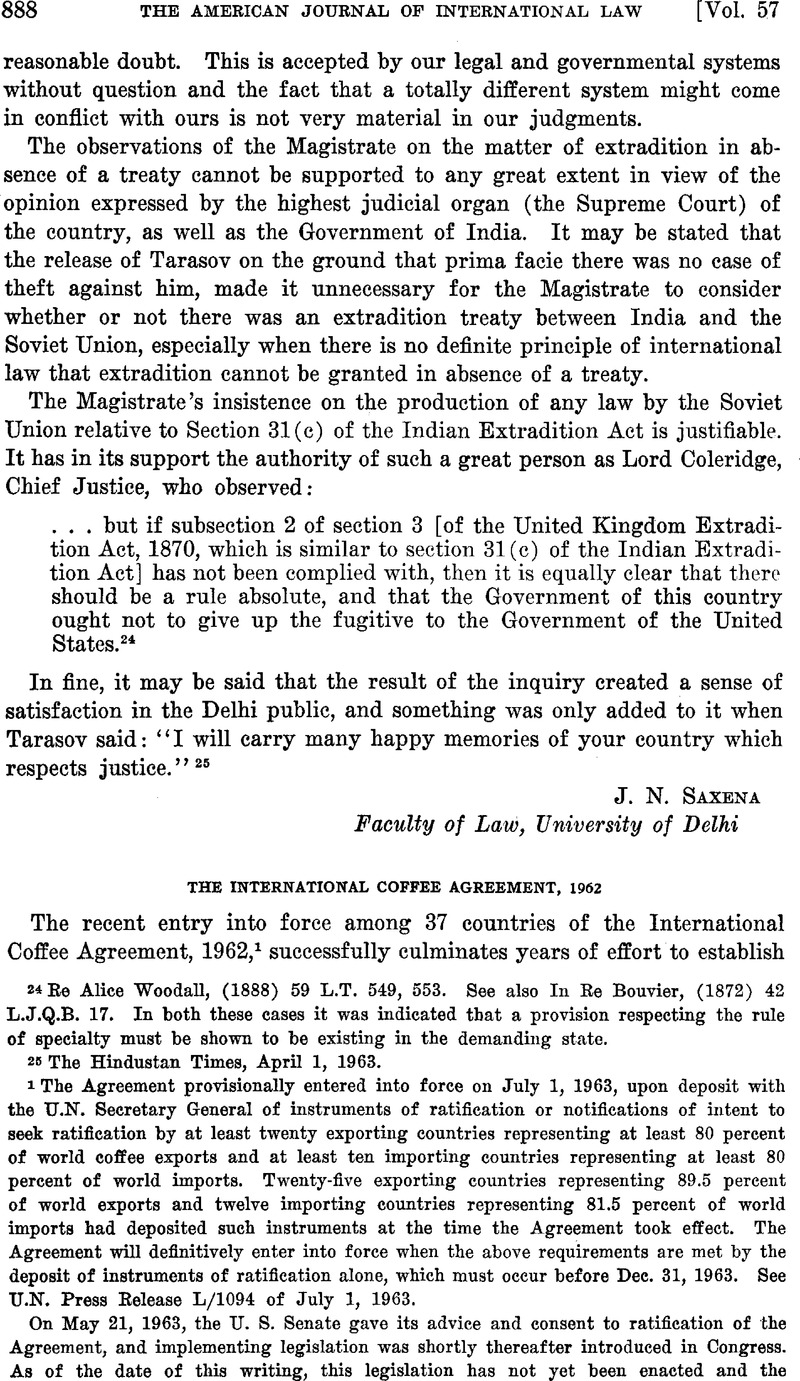Published online by Cambridge University Press: 28 March 2017

1 The Agreement provisionally entered into force on July 1, 1963, upon deposit with the U.N. Secretary General of instruments of ratification or notifications of intent to seek ratification by at least twenty exporting countries representing at least 80 percent of world coffee exports and at least ten importing countries representing at least 80 percent of world imports. Twenty-five exporting countries representing 89.5 percent of world exports and twelve importing countries representing 81.5 percent of world imports had deposited such instruments at the time the Agreement took effect. The Agreement will definitively enter into force when the above requirements are met by the deposit of instruments of ratification alone, which must occur before Dec. 31, 1963. See TJ.N. Press Eelease L/1094 of July 1, 1963. On May 21, 1963, the U. S. Senate gave its advice and consent to ratification of the Agreement, and implementing legislation was shortly thereafter introduced in Congress. As of the date of this writing, this legislation has not yet been enacted and the United States has not as yet formally ratified the Agreement. However, on June 24, 1963, in order to permit the Agreement to provisionally enter into force in time for arrangements to be made for the Coffee Year commencing Oct. 1, 1963, the United States deposited a notification of intent to seek ratification. See Dept. of State Press Eelease No. 329 of June 24, 1963.
2 For a more comprehensive discussion of the history and content of the Agreement, see Bilder, “The International Coffee Agreement: A Case History in Negotiation,” 28 Law and Contemporary Problems 328 (Spring, 1963).
3 For example, six of the producing countries (Colombia, Guatemala, El Salvador, Ethiopia, Brazil, and Costa Eica) derive 50 percent or more of their foreign exchange from coffee exports, and about a quarter of the total foreign exchange earnings of the 15 coffee-producing countries of Latin America comes from this single source. A 1φ per pound decline in coffee prices has been estimated to mean a yearly foreign exchange loss to Latin America of about 50 million dollars.
4 For instance, international economic agreements and institutions have received almost no attention in articles in this JOURNAL. However, for examples of useful studies along this line, see Hexner, “Worldwide Economic Institutions: A Factual Review,” 61 Columbia Law Rev. 354 (1961); and Metzger, “Settlement of International Disputes by Non-Judicial Methods,” 48 A.J.I.L. 408 (1954).